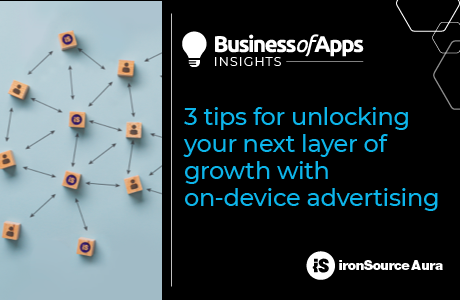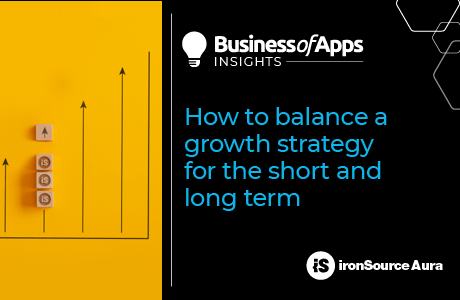Perhaps more than any other year, 2020 taught app marketers the importance of an agile, flexible, and diversified approach. The app marketing space was hit by waves of upheaval, from the ongoing impact of Covid-19 to Apple’s imminent IDFA changes. In the midst of this, app usage has continued to rise, and consumers have migrated in mass to mobile experiences. This has increased the competition for users’ attention which in turn led to an increase in UA costs.
For advertisers, this means it’s paramount to reach consumers through mobile, digital experiences that are relevant, innovative and cost-efficient. But that’s not enough – for performance marketers to truly succeed and grow their businesses in 2021, they will need to ensure they’re measuring the true impact of their campaigns, implementing a diverse media plan with creativity at its core, and focusing on long-term performance over short-term wins. Below, we unpack each of these three points to demonstrate why they should form a key part in your 2021 UA playbook.
Measure real impact
An approach that can have a big impact for UA managers in 2021 is to focus campaign efforts on channels that provide incrementality. Incrementality measures the uplift a channel gives beyond what you could have obtained organically or through existing marketing campaigns. Without measuring incrementality, you’re only able to identify correlation between your advertising channels and the desired outcome they’re ostensibly driving, vs causation. As a result, you’ll struggle to determine which channels are indispensable to your marketing performance, and on which channels you’re paying for installs from users who’d organically convert anyway. Incrementality, then, allows you to identify the causality behind the desired outcomes of your marketing campaigns.
It isn’t a new topic, and has been talked about ever since fraud became a problem in the mobile marketing ecosystem years ago. However, with competition sky high, a wide variety of marketing channels out there, and the impending limitations Apple’s privacy changes, incrementality measurement will be key to making smart, data-driven decisions.
In addition to ensuring you’re not paying for users that you could have obtained organically, you can also run incrementality tests which are designed to measure post-install incrementality – rather than the incrementality of the install alone. This lets you pinpoint which channels and ad creatives are driving the most value, and adjust your campaign goals accordingly. For marketers of all app categories, whether retail, food delivery, or finance, it’s unwise to measure the performance of a new channel based on relatively shallow metrics like installs. Installs as an isolated metric tells you little about the real value of the acquired users – without an understanding of the value of users, it’s impossible to truly optimize your bids or understand your ROAS. In other words, you risk wasting your marketing budget on sources that aren’t providing a real return on investment.
In fact, even focusing on ROAS and CPA performance is not enough to truly understand the impact and value of your marketing channels. That can only be achieved by measuring the incremental lift on the installs, CPA, and ROAS of each channel. Once you understand this lift, you can accurately adjust your KPI goal for each channel, allocate the right budget, and lay the foundations of a long-term growth strategy.
Creativity-driven diversification
Efficient bidding alone is not enough to drive app downloads to propel your app’s growth forward – it needs to be combined with a creative approach to your ad content and an experimental attitude to new marketing channels. In our industry, there is sometimes a danger of a KPI-driven mentality clipping the wings of innovation, experimentation, and creativity. Why try something new that might fail, when you could use the tried-and-tested formula and meet your KPIs?
But while your current growth goals might be reachable with standard activities, the next layer of growth will come from new and innovative marketing methods. That means trying out emerging channels like performance-based OEM and carrier platforms, experimenting with AR and VR, testing the waters with connected TV, blending your brand into mobile games, exploring the potential of advertising on podcasts, and even influencers. Not every new channel will be the right fit for your app, but there is probably more than one that could drive additional impact. Make sure that you can measure the return and uplift on whatever new channels you try – and be ready to pass on those that don’t bring you value.
A culture of experimentation and innovation comes hand-in-hand with diversification. Most savvy marketers understand the value of spreading UA activity across multiple channels, but 2020 really hit home the importance of this. Protect yourself from the potential impact of macro risks, industry upheaval, and global pandemics by creating a diverse media plan that helps you reach numerous demographics.
In addition, as you begin acquiring more users from new channels and ad creatives, think about tailoring how you actually design your in-app onboarding experience depending on the channel the users came from. The level of understanding they’ll have of your product will differ according to the channel or the ad creative that converted them: for example, users that come from preload or search campaigns should get a different in-app onboarding experience than users who converted after watching a 30 second video ad, in which you clearly conveyed all the core features of your app. They all have different experiences and levels of intent, and by personalizing their onboarding experience, using deferred deep linking and engineering resources, you can help maximize the retention and LTV of your acquired users.
Think long-term
It’s a well known adage that it’s more expensive to acquire a new user than it is to retain existing ones. To build a sustainable growth strategy, it’s important to combine any short-term goals with a long-term mindset for your user acquisition. By adding channels that bring you users with high LTVs and strong late retention rates, you can better monetize and invest more in growth.
The key is to identify which marketing channels can provide these users for your app, and then double down on them. Experimentation and innovation with your marketing strategy will come in handy here – as will incrementality measurement.
A long-term view to growth requires a switch in thinking when it comes to post-install behavior. On social and search channels you might expect immediate engagement post-install, and you’d likely pause the campaign if not. However, a long-term perspective isn’t just a buzzword, it must also be translated into the way you measure a campaign’s performance on a per channel basis.
Take OEM or carrier channels – unlike social and search channels which are measured at D1, D3, or D7, the value of OEM and carrier channels lies at the D30, D60, or D90 mark. A user who downloads an app during their mobile phone onboarding process might not necessarily show signs of engagement straight after. A travel app, for instance, might convert a user to download during the device onboarding, but the user might not open or interact with the app in a meaningful way for weeks – after all it’s unlikely the user will be immediately interested in booking a trip. However, when the time comes for them to book a holiday, they are highly likely to do so on this app, because it was the first travel app they installed on the phone. Instead of turning off the campaign, as you would on social and search channels, having a dedicated measurement strategy tailored for each channel will ensure you aren’t missing out on potential high-quality users.
How to acquire users for your app
The common denominator of these three tips is that they can all help you achieve sustainable, long-term growth with your performance marketing and acquire quality users for your app. They all work together: focusing only on channels with incrementality will make sure you’re allocating your budget as efficiently as possible, freeing up more resources to spend on a diverse and innovative media plan. A natural outcome of such a media plan will be adding channels that bring long-term value, to combine with the more immediate objectives of your social and search campaigns. Together, these strategies will be the fuel in your app’s growth engine.











